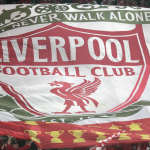THERE are many reasons that Unai Emery’s eventual departure came as a relief for Arsenal fans. One of those reasons is that it becomes possible to talk about the football again.
For a large chunk of this season, it has become almost self-defeating to discuss individual players, tactics or approaches to specific games because it has been crystal clear for some time that the team was broken on a much more fundamental level.
However, Emery’s departure does not immediately solve Arsenal’s issues. They still have a very unbalanced squad and it’s difficult to find eleven players from this hotchpotch of a team that fit together in a uniform manner. When Emery realised that the Gunners’ defensive issues were more profound than they had been at first glance, he opted to become ever more cautious in his approach.
‘Arsenal have a Champions League front two, a mid-table midfield and a defence that could get any manager the sack and a lesser club relegated’
— Osman (@OsmanZtheGooner) November 30, 2019
The problem was that this didn’t go any way to amending the team’s poor defensive record, but it did blunt Arsenal’s attack. The talent in the squad is enormously front loaded, with an attacking foursome of Pierre-Emerick Aubameyang, Alexandre Lacazette, Mesut Özil and Nicholas Pepe. Emery did not feel that he could play Özil and Pepe together, opting for one or the other. While Lacazette and Aubameyang want to play in the same position.
Balancing Arsenal’s attack is a tough proposition because their only natural option for the left side of the attack is rookie Bukayo Saka – possibly fellow rookie Reiss Nelson could be considered a natural fit. Otherwise, with Alex Iwobi sold, Arsenal have to shoehorn somebody into the left-sided role. Emery sometimes opted to play a back three with wing-backs, but that system leaves no room for Pepe. The blanket is never quite big enough- as Freddie Ljungberg discovered at Norwich.
There was a reason that Emery came to rely on Henrikh Mkhitaryan and Iwobi, both lacked consistency but provided better overall balance for the team. Freddie Ljungberg and whoever the next coach is will wrestle with this quandary too. However, this is, at least, something of a luxury issue. It might be that the new man just has to dispense with one of Lacazette, Pepe or Özil to make it work.
The defensive issues are even more difficult to solve because that’s a question of profile, as opposed to one of balance. There is a mismatch in quality between Arsenal’s attackers and defenders, but the problems are deeper rooted than that. In Rob Holding, David Luiz, Sokratis and Calum Chambers, Arsenal have a collection of centre-halves that lack recovery pace- which might partially explain Ljungberg’s decision to recall Shkodran Mustafi.
Laurent Koscielny is one of the few Gunners centre-halves to excel in the centre of a Gunners defensive line because he had a good athletic profile and an ability to recover into space. Chambers and Holding don’t really have this and the instinct of Luiz and Sokratis is to run back towards their own goal when they come under pressure.
The issue is exacerbated when you put Granit Xhaka in front of them, who probably has less recovery pace than all four of those centre-halves. Arsenal have an attacking line-up that demands an aggressive, front-footed approach, but the defence is totally ill-suited to playing a high line because the defenders cannot recover into space.
A day of mixed emotions for Freddie Ljungberg.#NORARS pic.twitter.com/V3IHdlCKxk
— Arsenal (@Arsenal) December 1, 2019
Even Torreira is not swift over long distances, he is a short distance player – a firefighter that runs into burning buildings to rescue the household pets, rather than a long-distance athlete. Guendouzi has the athleticism to cover space and distance, but he lacks the maturity to control space wisely at this point in his development.
The upshot is that Arsenal’s defence needs to sit in an armchair on the edge of its penalty area, the attack doesn’t fit comfortably together, but surely demands a more aggressive defensive line to create a regular supply line. Consequently, Arsenal’s midfield are left to cover too large a space- not quite sure whether to collapse on top of a slow defence for protection and starving their attack as a result.
One of the team’s most significant issues is one of spacing. The defence, the midfield and the attack become three very detached entities. This partially explains why opponents find it so easy to shoot at Bernd Leno’s goal. The defence retreats and the midfield is pulled apart like wet tissue paper, with one pass often enough to play through the Arsenal midfield.
Emery’s vision for attack involved, in my view, an over-reliance on attacking through wide spaces, which meant an abundance of players leaning towards the flanks, leaving a crater in the middle of the pitch manned by Xhaka and similarly immobile centre-halves. Eventually, Arsenal are going to have to reset the centre of their defence and their defensive midfield with more athletic options so the team can avail of its attacking talents.



